O.K this question is very basic, but i can't get it so need your help.
I understand the idea of splitting age to categories.
For example :

I don't understand how the model knows that the 30< category is before the 31-45 category, why the 31-45 category is before the 46-60 category and etc. how the model knows not to make this graph -

Thanks!